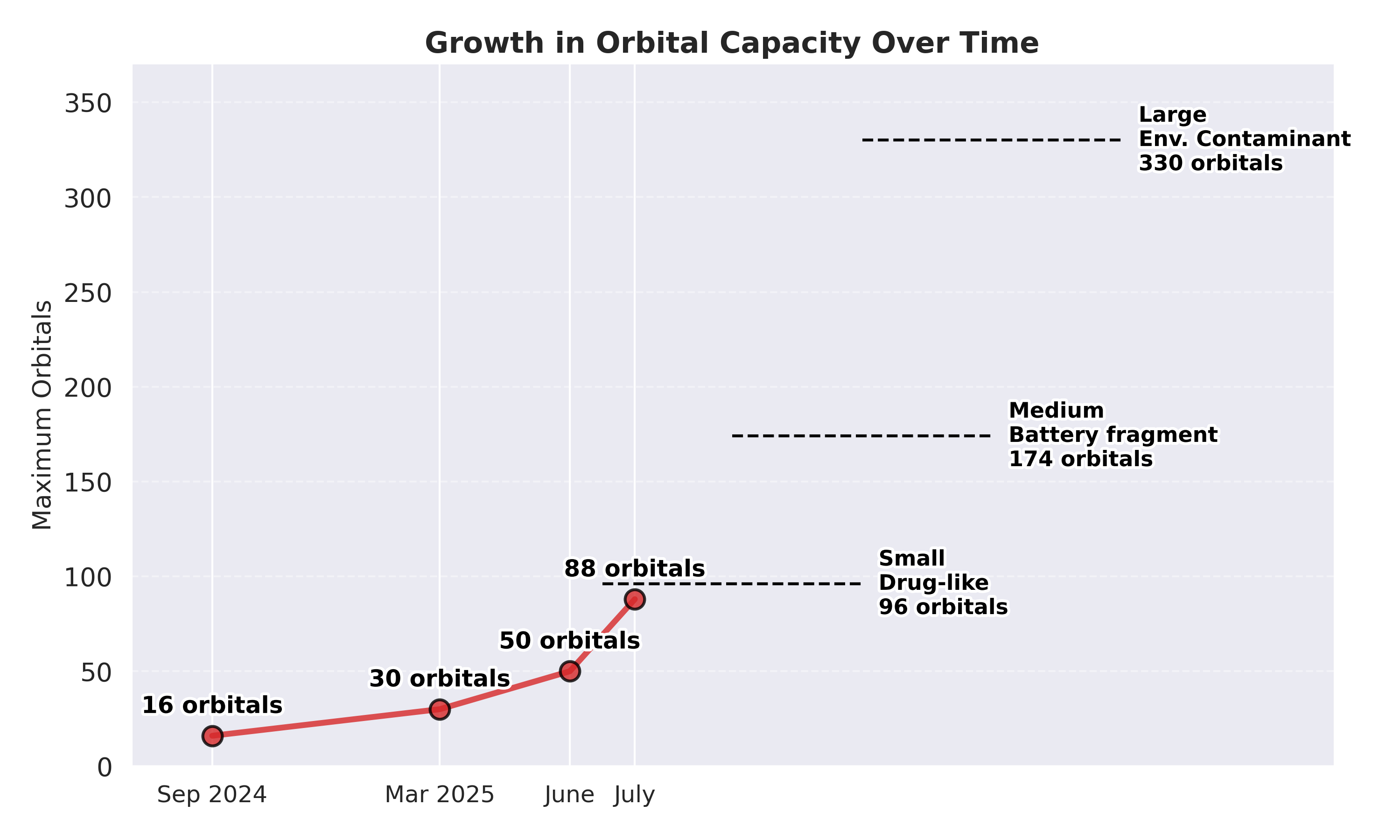Scaling to (and Beyond) 88 Orbitals – an Engineering Journey
The journey from 16 to 88 orbitals has been a wild ride; with continued innovation we see a clear path to hundreds of orbitals on classical hardware.

In June we celebrated passing the 50‑orbital mark, a milestone that meant our tensor‑network software could handle an active space roughly on par with the first generation of quantum‑chemistry demonstrations. That accomplishment came from a year of algorithmic surgery – a new computational kernel removed some of the brute‑force steps that limited us to ~16 orbitals, and highly efficient compression schemes borrowed from tensor‑network theory pushed us to 30 and then 50 orbitals. Since then our team has been on a memory‑management diet, rewriting low‑level routines to minimise temporary allocations, streaming data instead of storing it, and introducing even more efficient tensor‑network contractions. The result is a new release that can simulate 88 orbitals on commodity hardware - in other words, on a laptop with 32 GB of RAM.
Why does orbital capacity matter? In quantum‑chemistry simulations each spin‑orbital of a molecule corresponds to one qubit in a quantum computer[1]. On classical hardware we use qubits only virtually, but the storage and computation still scale exponentially with the number of orbitals. The electronic structure of a transition‑metal catalyst may require hundreds of spatial orbitals in modest basis sets[1]. Even on quantum computers, researchers reduce these systems to an active space of a few orbitals to fit within today’s quantum devices. For example, IonQ’s demonstration with AstraZeneca used a 24‑qubit register, representing an 8‑electron, 8‑orbital active space with 16 logical qubits plus 8 ancillas for error mitigation[1]. The full nickel‑catalyzed reaction they studied contains 130 spatial orbitals, which are handled via a classical post‑processing technique called virtual correlation energy[1]. In battery materials research, a recent Xanadu/Volkswagen study estimated that simulating a Li₄Mn₂O cluster with 18 orbitals and 22 electrons would require about 100 logical qubits and fewer than 10⁸ T‑gates[2]. Fault‑tolerant resource estimates go further: simulating generic battery materials may demand trillions of gates and >2 000 logical qubits, while even drug‑discovery applications are expected to need billions of gates and >1 000 qubits[3].
One of our goals is to make those numbers less frightening. With 88 orbitals we can simulate large catalytic clusters or fragments of crystalline materials at finite temperature, capturing subtle many‑body interactions that would otherwise be left out. To get there we:
Looking forward, we want to push past 100 orbitals by combining tensor networks with quantum embedding methods. We also plan to release open‑source tools that allow researchers to use our engine for their own molecules. The journey from 16 to 88 orbitals has been a wild ride; with continued innovation we see a clear path to hundreds of orbitals on classical hardware. Stay tuned – and if you have ideas for molecules that deserve our attention, let us know! 😊